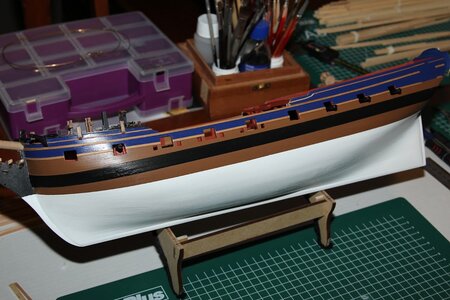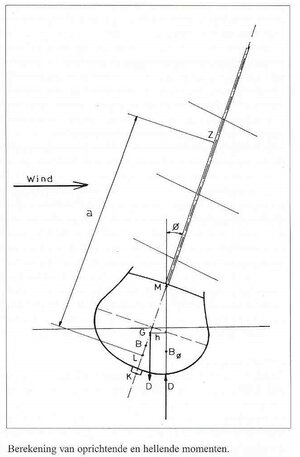Dear Friends
With the hull completed let's look at the ballast that the Willem Barentsz carried and the importance of it.
Lead from Museum Kaap Skil to expedition ship Willem Barentsz
On Thursday 4 July 2019, Museum Kaap Skil handed over a lead bar to the Willem Barentsz Foundation. This happened on Texel in the port of Oudeschild where the lead was ceremonially loaded into a sloop.
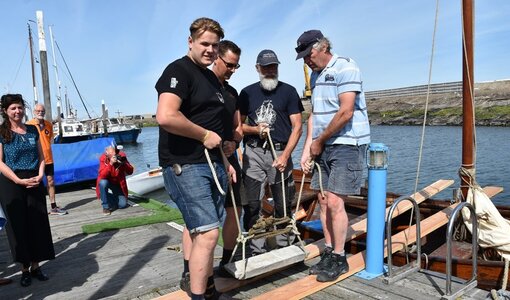
The lead bar is loaded into the sloop.
The 100kg leaden bar is the first of 6,000 kilograms of lead in total that the museum will lend to the foundation for a 10-year period for the replica ship, De 'Witte Swaen'. In the coming days, the lead will be transported to Harlingen by sloop.
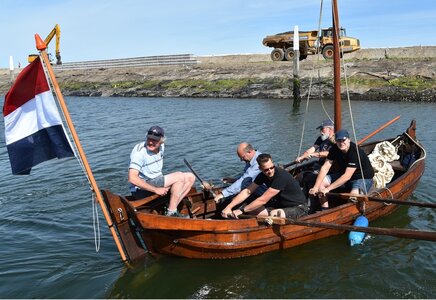
The sloop which will transport the first leaden bar to the replica ship in Haarlingen.
The lead comes from the “Loodwrak” – a wreck which was discovered in the early 80s in the Wadden Sea. The lead, which is date-stamped 1746, will form part of the ship’s ballast of 21 000 kg. Fifteen thousand kg of ballast has already been loaded while the remaining 6000 kilos needed to give the ship the right stability will be added in the coming period.
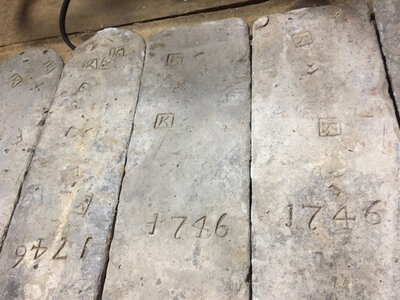
The leaden bars from the "Loodwrak" that will form part of the replica ship's ballast are date stamped "1746".
Ballast is also pertinently mentioned in Gerrit De Veer’s Journal.
On the 21 st of June 1596, De Veer writes that the men were collecting stones from land (presumably as additional ballast). On the 4th of August, De Veer writes again that the men – with great difficulty – were hauling stones from land. On the surface of things, it sounds unlikely that after only 6 weeks of being at sea (the journey commenced on the 10 May 1596), it is already required to take ballast aboard.
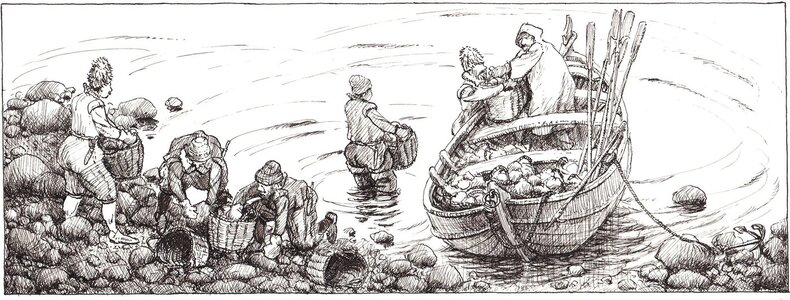
The Willem Barentsz's crew collecting additional ballast.
Ab offers the following interesting hypothesis: Let’s assume that each crew member drank two liters of liquids a day with a third liter (per person) used for cooking and personal hygiene. That would amount to 75 kg a day. For the 42 days between 10 May and 21 June and for the 44 days between 21 June and 4 August, the total weight (in liquids) used, would be 3.3 tons. Adding the weight of the fuel used for cooking, it would be fair to round off that figure to 3.5 tons.
This loss in ballast was deemed enough to affect the ship’s stability adversely – hence the need for the men to collect additional ballast (even if it was done with great difficulty and hard labor).
Another reason for collecting additional ballast may have come from Barentsz wanting to experiment with ballast placements for optimum performance. Captains were known to have conducted these types of tests regularly e.g., by moving the crew around to different parts of the ship. Sometimes, the smallest change could lead to the most profound results. It is mentioned that one 18th Century frigate sailed much better with the one cabin door opened than when closed. Ab mentions – tongue-in-cheek- that it is not mentioned whether the open door meant direct supervision from the captain!





 , this is a way longer answer than I bargained for, but I highly appreciate your extensive answer and the time you took to put this all together.
, this is a way longer answer than I bargained for, but I highly appreciate your extensive answer and the time you took to put this all together.
